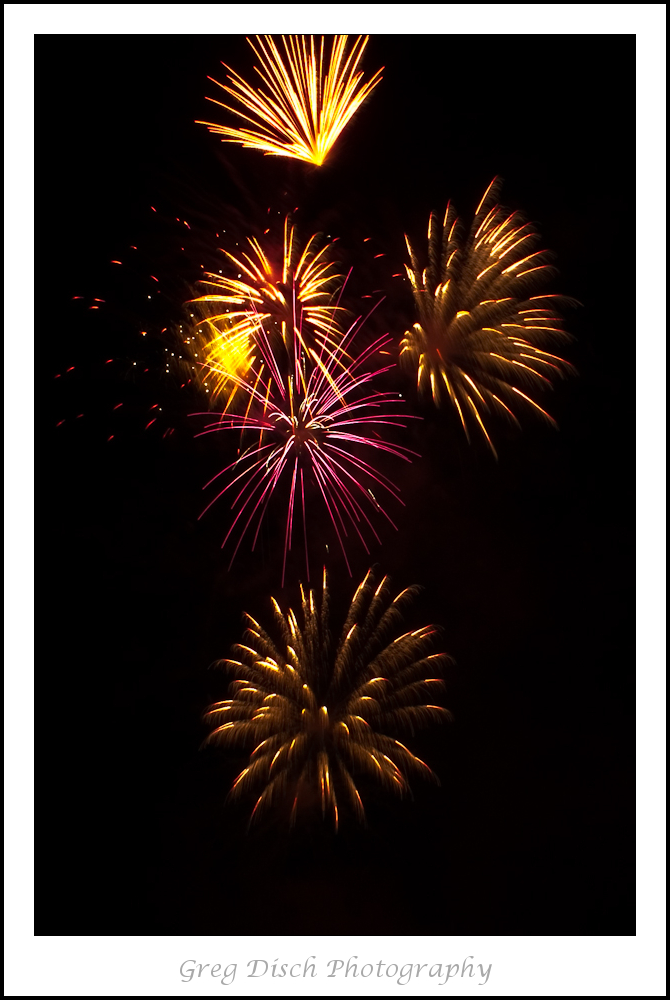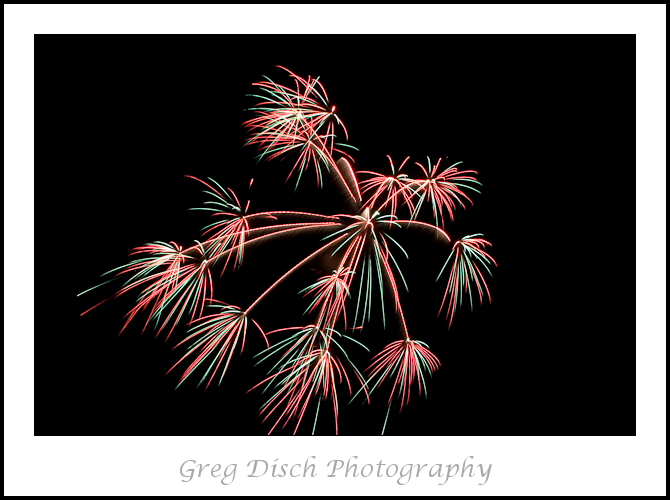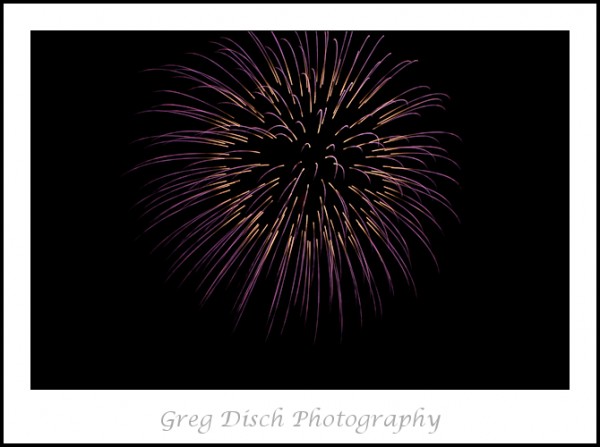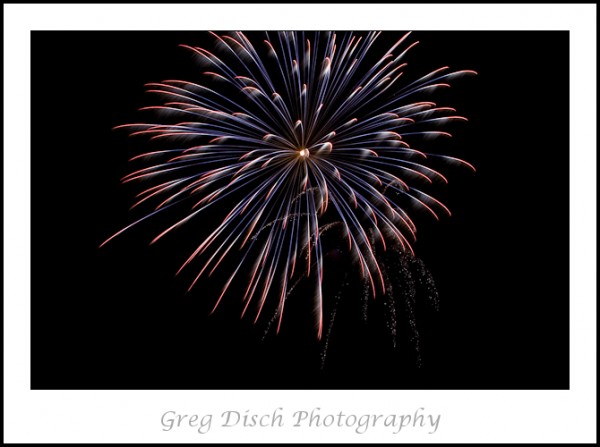Ok, it’s the 4th of July (well it will be soon!) and you’ve just spent the entire day sun burning, and grilling hot dogs and hamburgers, been swimming and enjoying the day off from work, and of course celebrating our nations freedom. Night time is fast approaching and it’s time for local fireworks shows, and a great time for some unique photo opportunities.
Planning
Plan ahead, get to the show early enough to get a good spot and a view without annoying backgrounds or telephone poles etc. Be sure you have enough room to setup your tripod (You remember, the thing with three legs to hold your camera still). Also be sure there are no bright light sources in the picture, you will want a dark background so the fireworks stand out. For really good fireworks photos you shoold have a cityscape or other objects in your photo. Fireworks are like sunsets, they need something in the forground to make them interesting.
Equipment
A digital camera, either a DSLR or a point and shoot will work, however you will not have the control that you do with a DSLR . A tripod or something that will work for one, long exposures require the camera to be perfectly still ( if you blow off the rest of the article, this is probably the most important). A remote shutter release is great to keep you from moving the camera by pushing the button, normally the self time would work, but it is hard to fire at the correct time whine shooting fireworks. You will also want to bring a flashlight to make adjustments to your camera in the dark and extra batteries and memory cards. Do not use any filters, if you keep a UV filter on your camera, remove it, it will only cause light to bounce around causing lens flare.
Camera Settings
- Use a normal or wide angle lens. It’s way to much work to try and catch an exploding burst of light with a long lens, and you can crop your shots on a computer when done shooting.
- Set your camera to use the highest quality setting (the easiest way to do this is simply to adjust the picture quality setting until you get the least number of photos on your memory card).
- Turn off the flash, it won’t reach the fireworks, just the guys bald head in front of you. (If you cannot turn it off, then cover it with a piece of black cardboard or something).
- Turn off auto focus, (It won’t work anyway it’s dark outside) set the focus to infinity, if the fireworks are closer than that, you are in the wrong place!
- Shoot in manual mode, if you have never used manual get out the instructions and learn how befor you head out to shoot.
- Set the aperture to F8 or smaller (That’s a higher number). If you cannot set the camera manually, set it to landscape, fireworks, or a setting for greater depth of field.
- Set the shutter speed between 1/2 and 4 seconds, and continue to experiment (if you cannot set this manually the auto settings will probably work).
- Set the ISO setting as low as possible 50 – 100, this is especially important on the automatic camera because this will lengthen the exposure time (This is also the best way to get clean blacks, without the digital noise). Many cameras now set ISO automatically, this needs to be turned off.
- Use a cable release or the self timer function (to use the self timer to shoot fire works it helps to be psyche so you know when to shoot). Many cameras now come with wireless remote controls that work great.
- If you have “Image Stabilization”, “Vibration Reduction”, or equivilant turn it off (you have your camera firmly mounted on a tripod in which case it can actually work against you).
- If you can shoot in RAW do it.
Technique
Depending on your location, and many other factors the technique used to capture the correct moment will vary. I generally will setup and shoot a wide angle enough shot to be able to capture the entire burst almost anywhere that they fire it. This requires a wide angle lens or being far away, either way will work. If you are close enough to hear the shells being launched it can be very easy to determine when to release the shutter, since you can easily dertemin the time from launch to explosion, which will be fairly constant.
Check Your Results
After you have set everything correctly and shot a few photos, check the display on your camera and make sure you like what you are getting. The histogram is of very little use for fireworks, no need to worry about it.
Basically the two things to remember are:
1. The aperture controlls how bright the fireworks are.
2. The shutter speed controls the length of the fireworks trails.
Have Fun
Now for the fun part, start experimenting with your settings and looking at the results, change the settings and experiment. There is not necessarily a correct setting. Longer exposures will give long trailing lines of light, while short exposures will give small spots of light. Both will make good pictures. If the picture is to bright, use a smaller aperture F16 or F22. If they are too Dark use a larger aperture F5.6 or F4.
Just for fun try a few shots (now that you have that exposure thing all figured out) with the camera off the tripod, (no don’t try to hold it still, you can’t do that, that’s why you use the tripod) and jiggle the camera while taking the picture.
Now keep shooting and don’t stop till it’s over or your batteries are dead (I told you to bring extra batteries) or you are out of memory cards (I told you to bring extra memory cards).
Post Processing
The night is over and you have hundreds of great shots of the celebration. You are now halfway thru, you must process your digital images to get the great images that you are after.






